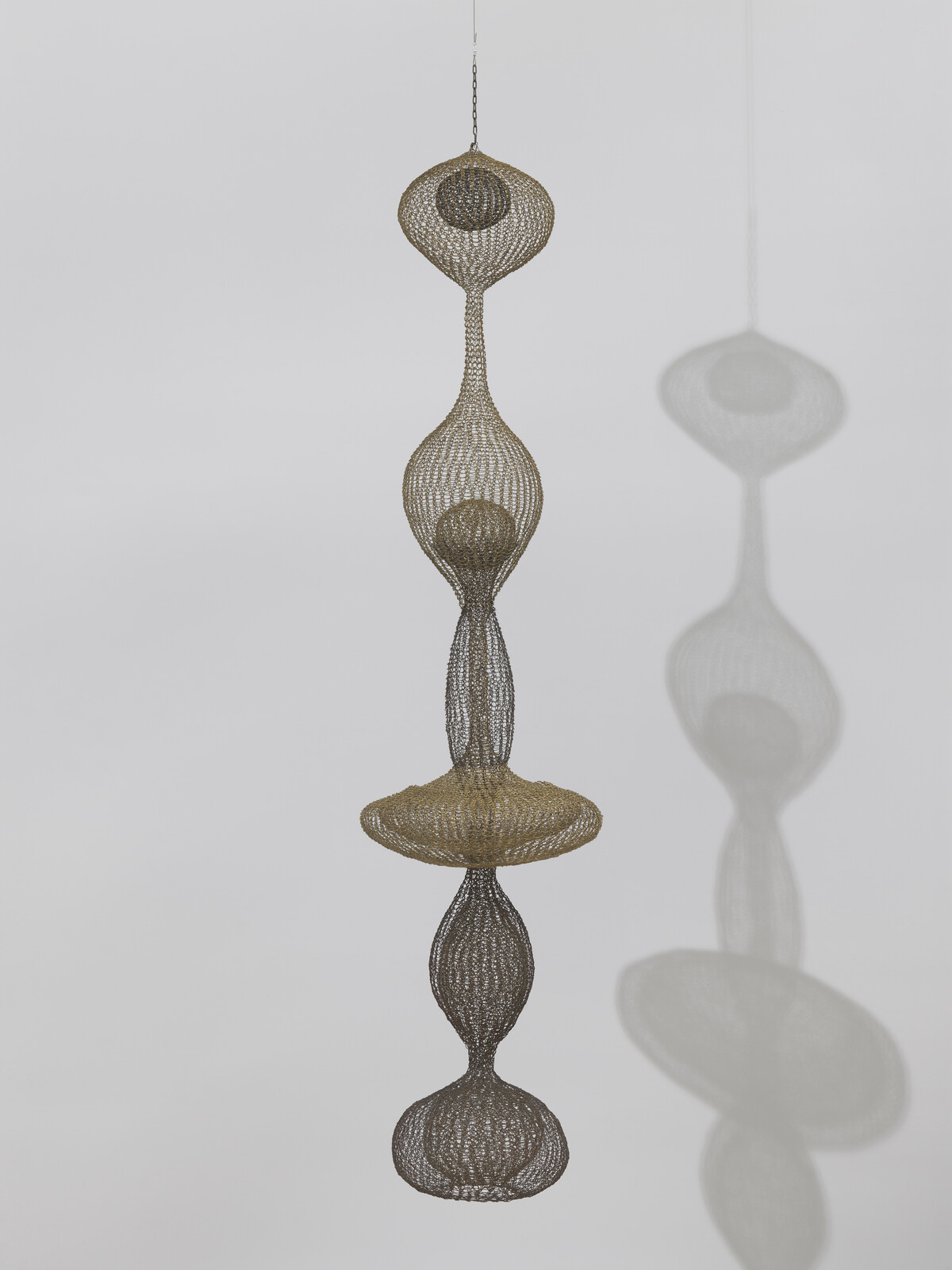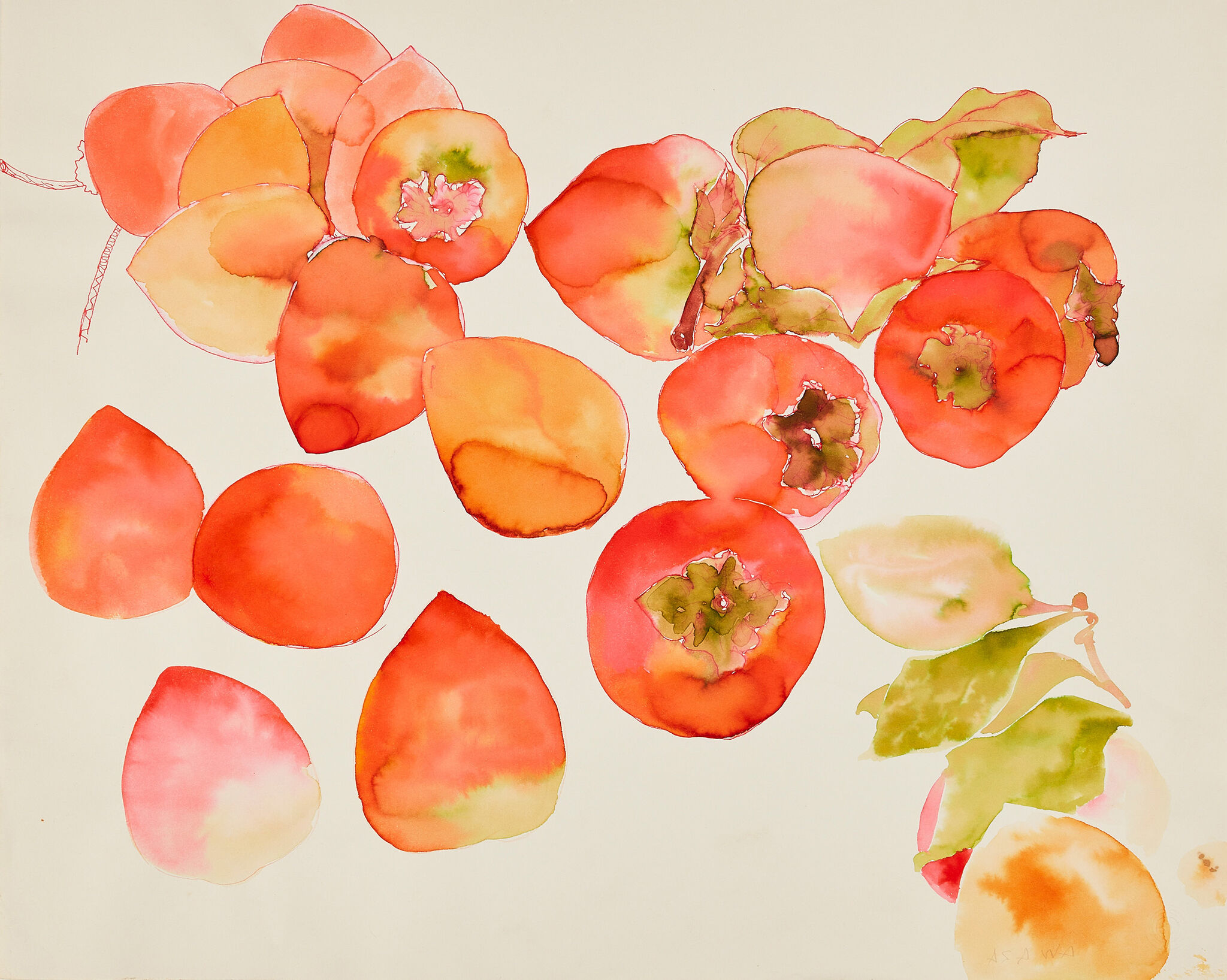Untitled (LP.009, Fish), 1987
Aug 30, 2023
0:00
Untitled (LP.009, Fish), 1987
0:00
Narrator: Asawa used Japanese paper to make this print of a large fish.
Clara Rojas-Sebesta: This would be a life-size impression of an actual fish in an art form called Gyotaku. It's a traditional Japanese fish printing, which would have been used by fishermen to record their catch.
In the process of inking the fish, the ink collected differently across the surface. The choice of paper would have been important because it's a very thin, lightweight paper, but also strong. Japanese paper is made out of very long fibers that hold up even when they're wet, the thinness of the paper allows her to see how the ink is being absorbed from the back of the paper.
Some of the edges of the fish don't appear, but you can see her pressing the fish's jaw as you're moving across the dorsal fins, the pectoral fins, and the change in the size of the scales.
And we still see evidence of that process in the paper. It's quite wrinkled horizontally or around all the edges of the fish, so you can see where the paper was draped over it.
Narrator: Asawa used processes like this as a way to study and explore.


